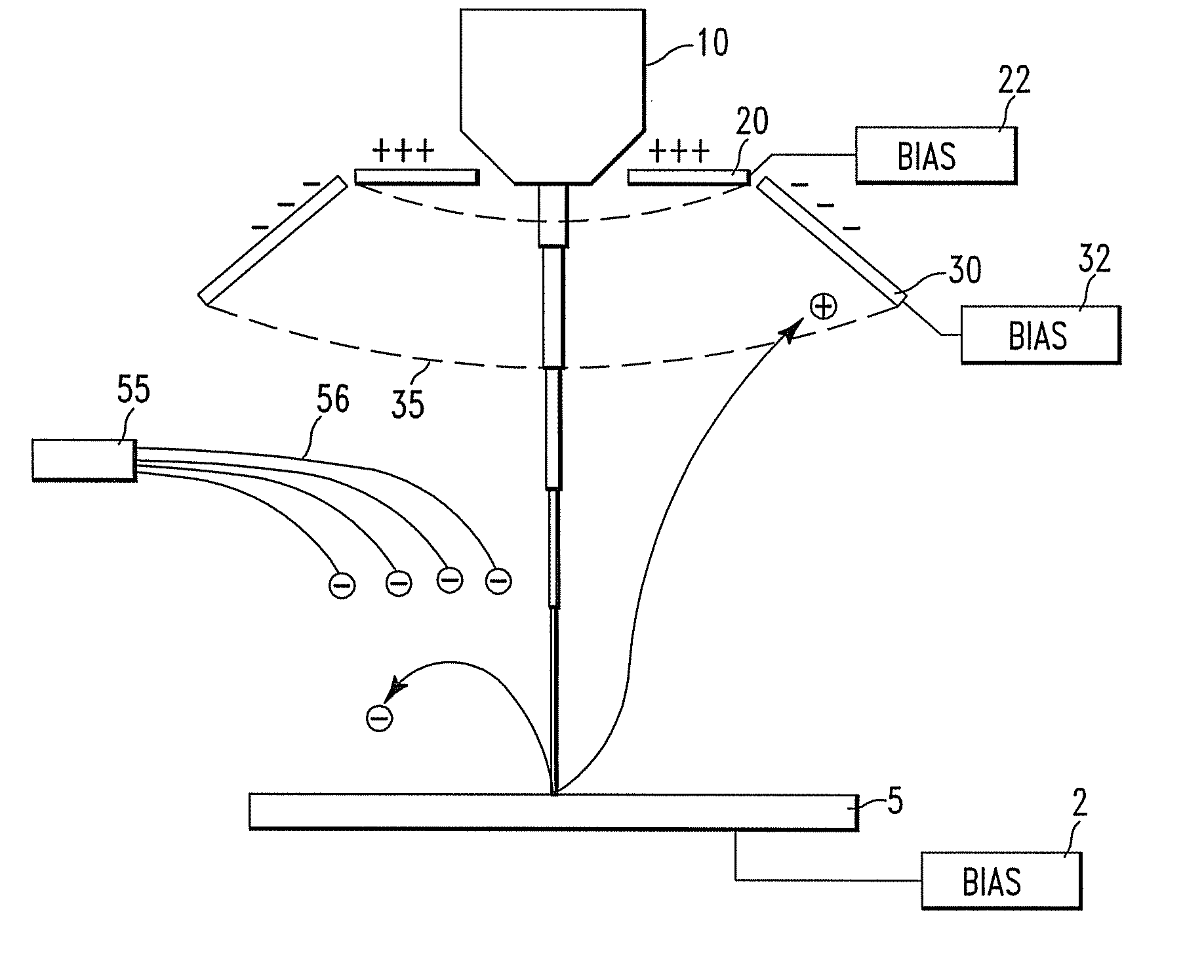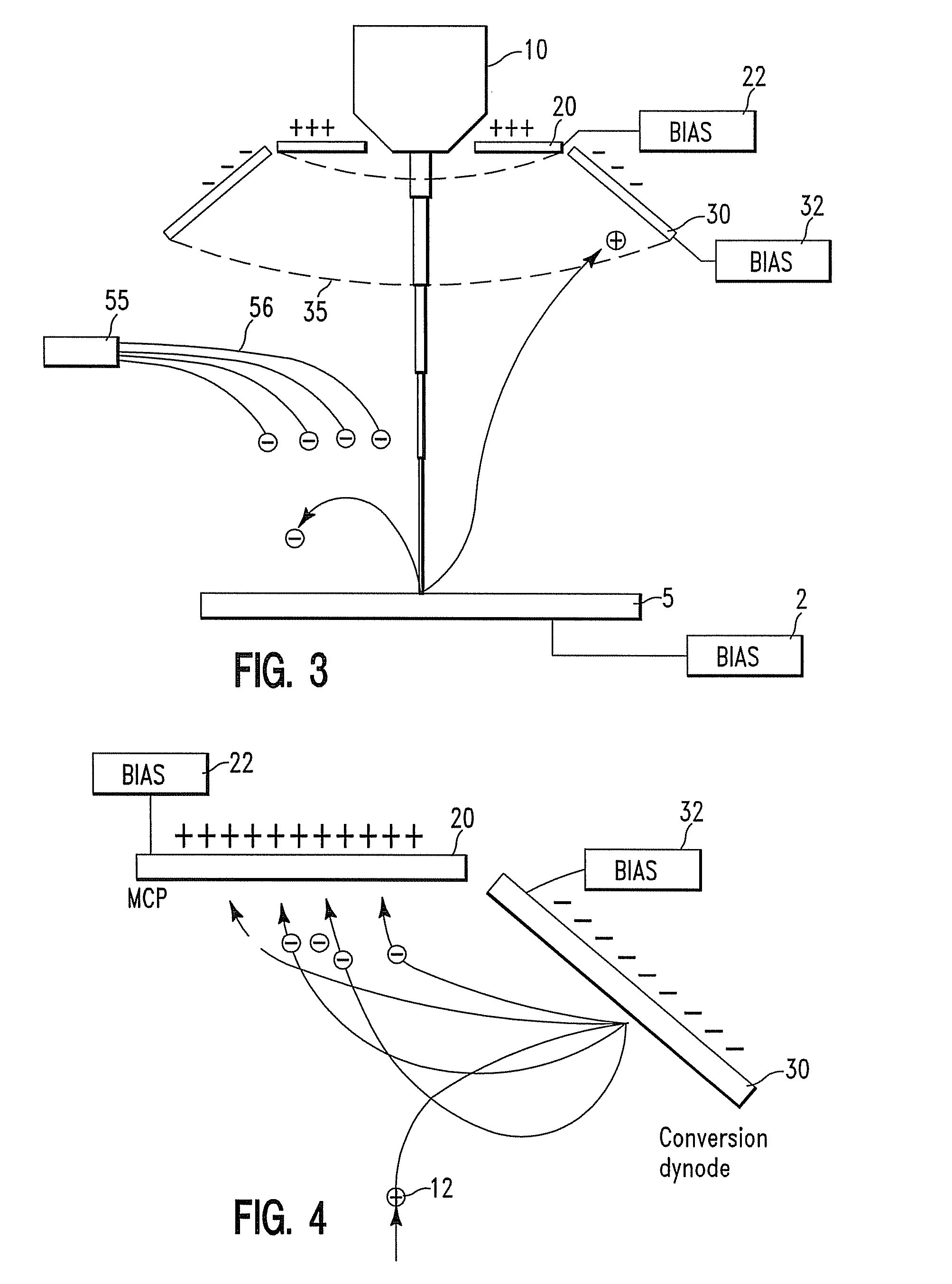Ion detector for ion beam applications
a technology of ion beam and detector, applied in the direction of instruments, heat measurement, material analysis using wave/particle radiation, etc., can solve the problems of damage due to electrostatic discharge, poor signal-to-noise ratio of ion mode, and one serious limitation of ion mode, so as to improve the net detected signal
- Summary
- Abstract
- Description
- Claims
- Application Information
AI Technical Summary
Benefits of technology
Problems solved by technology
Method used
Image
Examples
Embodiment Construction
[0027]FIG. 3 illustrates in cross section a version of the invention that includes the addition of a conversion dynode 30 to the FIB detector hardware. The conversion dynode is preferably in the shape of a frustum of a cone (which may have a non-metallic coating) that extends azimuthally about the primary beam 50 and is located near the MCP. Dashed lines 35 indicate the path of the front portion of the dynode 30. In a conventional cross section, lines 35 would have gone straight across, but that would have blocked the MCP. Instead, for improved clarity in presentation, the front portion of the figure, in front of the plane of the cross section, is shown pictorially.
[0028]The material of the dynode has a low work function so that electrons are easily released. Commercially available photomultipliers use coatings on multiplier electrodes that are suitable.
[0029]FIG. 3 indicates the operation of the system in ion mode, with electron source 55 generating electrons to neutralize residual...
PUM
| Property | Measurement | Unit |
|---|---|---|
| shape | aaaaa | aaaaa |
| electrical | aaaaa | aaaaa |
| electrical signal | aaaaa | aaaaa |
Abstract
Description
Claims
Application Information
 Login to View More
Login to View More - R&D
- Intellectual Property
- Life Sciences
- Materials
- Tech Scout
- Unparalleled Data Quality
- Higher Quality Content
- 60% Fewer Hallucinations
Browse by: Latest US Patents, China's latest patents, Technical Efficacy Thesaurus, Application Domain, Technology Topic, Popular Technical Reports.
© 2025 PatSnap. All rights reserved.Legal|Privacy policy|Modern Slavery Act Transparency Statement|Sitemap|About US| Contact US: help@patsnap.com



